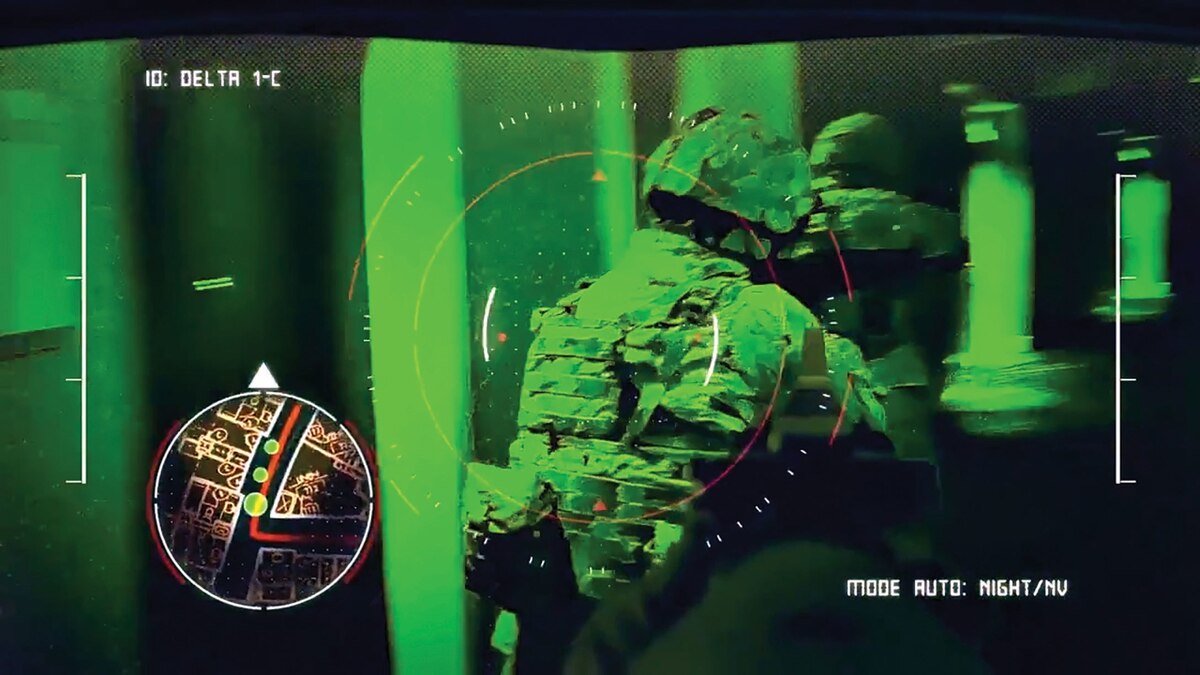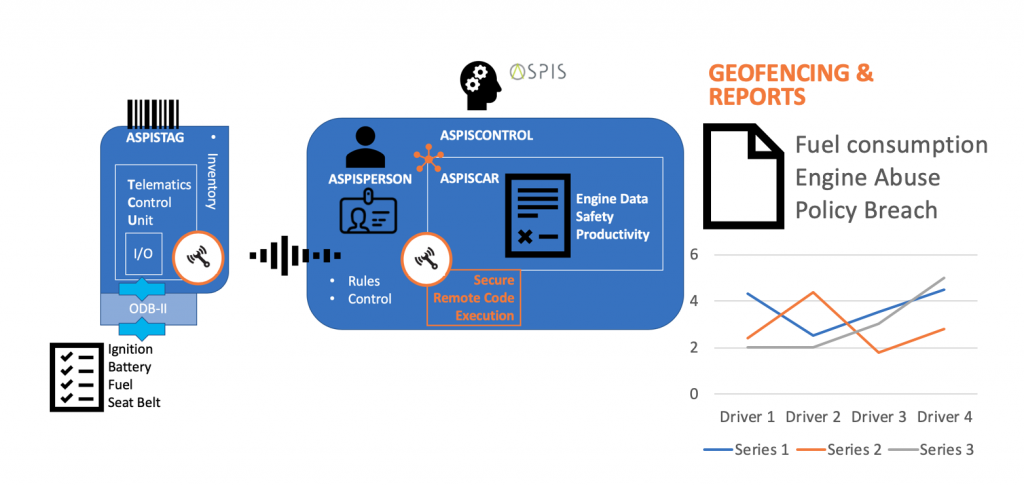Telematics in Motion

Functional Components
ASPISCAR, the control of the telematics component of the ASPIS System, is a combination of an external hardware module and software functionality that enables the seamless integration between track& trace and asset management.
While we believe IoT to be a cornerstone of the fully connected world and the ability to measure and control the environment every connected asset is running in, we also believe that some applications demand for he need to be connected on an as-is basis. This is specifically true when willing to avoid to open up your environment to any potential threats, where millions of hackers are freely available to approach you over well known protocols such as (TCP/IP) and the Internet.
Therefore our telematics solutions are based on proprietary RFID exchanges and use in-house developed Secure Remote Code Execution, via our telematics components, embedded in the overall solution. To better understand the interaction between our components take a look at our ASPIS System and the ASPISCAR component of the solution;

Therefore we have taken another approach where Security and the communication between assets and their control, or the delegation of such control, is taking place over proprietary communication protocols and security mechanisms, without the need for Internet connectivity.
In-Vehicle Inventory : ASPIS InMotion ©




- Our RFID in-vehicle inventory software, ASPIS InMotion, provides real-time asset tracking information. Reader data is forwarded to the ASPISControl inventory software, which then updates the inventory counts. Using the secure software interface, the operator can tell what and how many of each item is available on the vehicle. The system can send e- mail notifications for low or unexpected inventory, missing gear, or gear maintenance, for predefined confinement zones (geofencing strategies).
- Confinement is where you want someone to stay within an area, and can be set up to send you an alert should they leave the specified zone. For organizations that have region-specific operators – a military region, or a police district for example – geofences can help to keep everyone where they should be.
- Alarms are triggered when they leave the confinement and are breaching the active policy regarding people and gear (weapons)
- The ASPIS InMotion component being under control of the ASPISCONTROL management component, allows to check on the rules and policies being defined in the central database and take control of the specific functions of a vehicle (even stalling the engine) within its environment, all without the need for 3G (Internet) connectivity, due to our patented technology embedded in our ASPISCAR hardware component
- Mobile Checkpoints allow for quick inventory checks on the road and can go as dar as being embedded in typical comunications and patrol vehicles
Law Enforcement
The average patrol vehicle carries an extensive inventory of gear to allow officers to respond to a variety of situations. RFID in-vehicle inventory systems can speed up the inventory process routinely performed at the start and end of a shift, and when an officer is leaving a scene where they have deployed gear. These systems can be especially helpful in situations where multiple officers have responded and deployed gear that needs to be recovered. In addition, much of the gear issued to officers requires periodic maintenance. RFID in-vehicle inventory systems can aid agencies in ensuring that maintenance is up-to-date.
Fire Rescue
RFID in-vehicle inventory systems for fire rescue have unique challenges. Fire rescue gear is often subjected to extremes of the environment. Extreme heat, water, high vibration, and shocks are common environments for fire rescue gear. RFID tags engineered for environmental extremes are necessary for fire rescue applications. In particular cases we also might opt for adding Active RFID tags for better read results in these challenging conditions.
Emergency Medical Services
Ambulances carry a huge array of gear , the majority of which are subject to routine maintenance and refresh cycles. Much of this gear is deployed out of the vehicle when responding to an event, and there is ample opportunity for the urgency of the situation to result in leaving gear behind. Passive RFID in-vehicle inventory systems can reduce inventory time, but active systems are a good fit to manage the costly gear that is commonly deployed from an ambulance. In addition, ambulances often have medications onboard that require temperature controlled storage, as well as narcotics which require locked storage. Active RFID tags with temperature or intrusion detection sensors can monitor the environment and provide security for medications
 Weapons Tracking
Weapons Tracking 